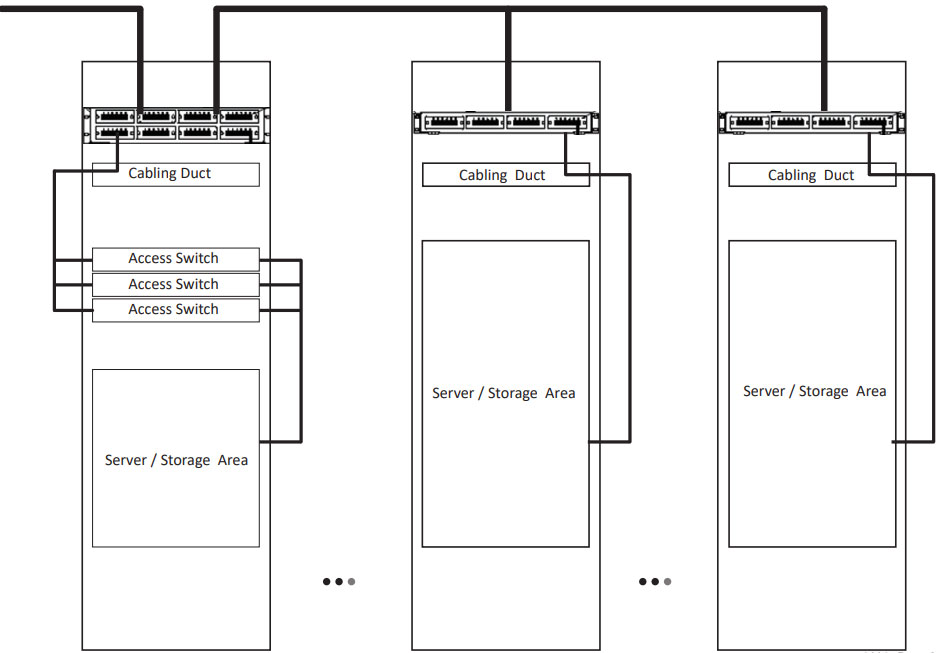In response to the escalating demand for bandwidth in global enterprises, data centers require upgrades to bolster computing, storage, and networking capacities. The shift from 10G/25G to 100G is inevitable, necessitating corresponding adjustments to the optical cabling system. This article serves as a guide on crafting a data center optical cabling infrastructure tailored for 100G Ethernet.
The Imperative for 100G Ethernet
The proliferation of technologies like 5G, cloud computing, big data, IoT, and 4K/8K video has generated substantial data, intensifying bandwidth requirements. Concurrently, networking essentials such as switching, routing, virtualization, convergence, and high-performance computing demand elevated speeds within data centers. Traditional 1G and 10G configurations struggle to meet the demands of these bandwidth-intensive applications, compelling data centers to migrate to 40G/100G networks for current and anticipated data processing requirements.
As data centers undergo network upgrades and expansions, a meticulously planned cabling infrastructure becomes pivotal. Reliability, manageability, and scalability are paramount for the data center's sustained functionality. Ensuring a reliable network connection, seamless daily management, and scalability in cabling infrastructure are vital for addressing escalating bandwidth demands in the foreseeable future.
Considerations for 100G Data Center Optical Cabling Design
Efficiently constructing a high-performance 100G data center cabling system involves contemplating various facets of the cabling infrastructure, including:
1. Bandwidth
Adequate bandwidth is indispensable for processing the necessary network traffic within a data center. The data center's external network connections and internal topology must align with substantial network capacity to accommodate the transition to 100G.
2. Insertion Loss
Critical in contemporary data center cabling, insertion loss results from connection points like connectors and splices along a 100G cable line. Lower insertion loss enhances performance; as excessive levels can compromise signal reception at the link's distant end.
3. Optical Skew
Defined as the variance in light propagation time across fibers, optical skew is crucial for parallel optics transmission. Strict skew performance in connectivity solutions is imperative to prevent transmission errors arising from excessive skew or delay on different channels.
4. IEEE and TIA Standards
Adherence to standards is pivotal in data center optical cabling. Given the distinctive requirements of 100G, both IEEE and TIA standards play a crucial role in defining performance parameters and structured cabling systems.
Optical Cabling Design Solution in 100G Data Center
Optical fibers deployed in 100G data centers must meet current and future application requirements, ensuring reliable network connectivity and convenient management for sustained operation and growth. The recommended optical cabling design solution includes:
1. Structured Cabling System
Adopting a structured cabling system with larger End-of-Row (EoR) switches facilitates connections to multiple servers via structured cabling interconnections or cross-connections. This system, aligned with TIA-942, supports low-latency communication between servers and offers flexibility and scalability for cost-effective expansion.

2. Recommended Optical Cabling Solution
Leveraging MPO-based connectivity using OM3 and OM4 fibers is the optimal solution for 100G data center design. This solution simplifies the migration from 25G to 100G, with OM3 and OM4 fibers aligning with the IEEE 802.3ba Ethernet Standard, ensuring high performance and scalability for structured cabling systems.
As illustrated, 24-fiber MPO MM patch cables facilitate 100G connectivity between the EoR leaf switch and servers in data centers. MPO jumpers connect to pre-terminated modules or panels, forming a plug-and-play cabling system.

Addressing Future Needs
With evolving networking technologies demanding higher transmission rates and superior cabling systems, optical connectivity solutions are indispensable for data centers. MPO-based connectivity with OM3 and OM4 fibers stands out as an ideal solution, providing a seamless and reliable migration path for data centers transitioning to 100G Ethernet.

 Fiber Optic Flex Circuit (FOFC)
Advanced Simulation & Optimization, High Positioning Accuracy, Flexible Customization, Rigorous Reliability Testing
Fiber Optic Flex Circuit (FOFC)
Advanced Simulation & Optimization, High Positioning Accuracy, Flexible Customization, Rigorous Reliability Testing MDC Solution
US Conec's MDC connector is a Very Small Form Factor (VSFF) duplex optical connector, expertly designed for terminating single-mode and multimode fiber cables with diameters up to 2.0mm.
MDC Solution
US Conec's MDC connector is a Very Small Form Factor (VSFF) duplex optical connector, expertly designed for terminating single-mode and multimode fiber cables with diameters up to 2.0mm. MMC Solution
US Conec's Very Small Form Factor (VSFF) multi-fiber optical connector that redefines high-density connectivity with its cutting-edge TMT ferrule technology and intuitive Direct-Conec™ push-pull boot design.
MMC Solution
US Conec's Very Small Form Factor (VSFF) multi-fiber optical connector that redefines high-density connectivity with its cutting-edge TMT ferrule technology and intuitive Direct-Conec™ push-pull boot design. EN
EN
 jp
jp  fr
fr  es
es  it
it  ru
ru  pt
pt  ar
ar  el
el  nl
nl 





_and_High-Reflection_(HR)_Optical_Coatings.webp)
